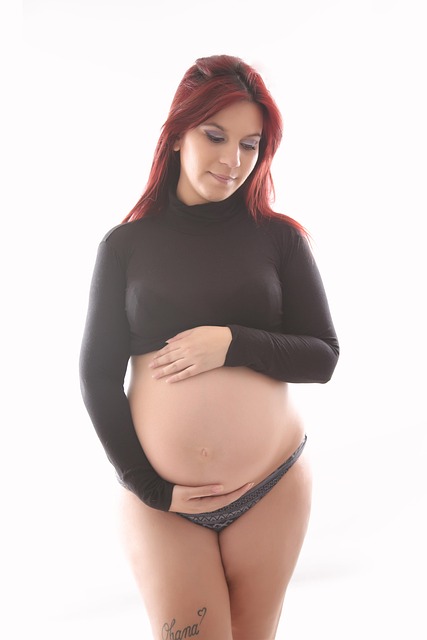“Mama, waiting for a new baby is tough,” my three-year-old observes from her car seat one afternoon as we head to the grocery store. Her innocent words encapsulate the complicated emotions I’ve been grappling with.
“Indeed, it is challenging to wait,” I reply, acknowledging the truth in her statement. The struggle intensifies when trying to conceive a second child takes longer than anticipated.
When I was pregnant with my first child, my partner and I were blissfully unaware of the complexities ahead. We decided to stop using contraception one month, and by the next cycle, I was greeted with two pink lines on a pregnancy test. I emerged from the bathroom, beaming and triumphantly announcing, “We’re expecting!” It all unfolded effortlessly, devoid of anxiety or endless online searches.
My first pregnancy was textbook-perfect, culminating in the birth of a beautiful daughter nine months later. Transitioning to parenthood was gradual, punctuated by fatigue and plenty of coffee. After two years, as our once-clingy infant blossomed into a spirited toddler, we decided to try for another baby. I assumed the process would mirror our first experience. In my mind, if we conceived in August or September, we’d have another summer baby. I imagined reusing some of our daughter’s clothes and those cozy newborn sleep sacks suitable for warm weather.
However, when my period arrived that first month, I was left bewildered and disappointed. As the months passed, my initial confusion morphed into a deep sense of frustration and anxiety. Each month, I found myself convincing that I was pregnant. A few days before my expected period, I would scrutinize every sign. “I felt unusually tired today; surely that means I’m pregnant,” I’d tell myself. I’d wake several times at night, thinking, “This must be a good sign.” I even scoured WebMD for early pregnancy symptoms, convincing myself I was experiencing them all. The mind is powerful, but not powerful enough to create life.
The day I dreaded the most was when menstruation began. With the familiar cramps came tears of disappointment and a lump in my throat that felt impossible to swallow. The effort of hoping is exhausting; waiting is even harder. I never anticipated that this journey would take so long.
Five months later, I finally saw those two pink lines again. I was cautious this time, taking three pregnancy tests to confirm. It was mid-December, and on Christmas morning, my partner and I excitedly shared the news of an upcoming grandchild with family. We were elated, and our almost-three-year-old couldn’t stop chattering about the new baby.
Tragically, two weeks later, we lost that baby.
Now, four months post-miscarriage, I still find myself surprised by the lingering sadness. It doesn’t greet me each morning; instead, the first thing I feel is the urge for a few more minutes of sleep. Yet, beneath the surface, the sadness lingers like an unseen bruise—barely noticeable until touched, causing pain.
It has been nearly ten months of yearning for another child. My online searches have led me to terms like “secondary infertility.” After blood tests revealed no medical issues hindering conception, I grapple with the uncertainty of waiting without clear answers.
“It can take an average, healthy couple anywhere from 6 to 12 months to conceive,” my OB reassured me during one visit while I sat in a paper gown. It’s a fact that leaves me feeling both discouraged and hopeful.
As we pull into the grocery store parking lot, I help my daughter out of her car seat. I notice a pregnant woman next to us, her belly stretching against her pants. She offers a warm smile, and I return it with a half-hearted nod, my hand instinctively resting on the empty space below my abdomen. Without needing to calculate, I know I would have been five months pregnant today.
As my heart aches with this realization, my daughter pulls my hand, redirecting my attention to the grocery store. “Can we get Cheerios?” she asks eagerly. I smile, cherishing that she still views Cheerios as a special treat.
I recognize the immense gift of motherhood and am grateful for my daughter, yet the longing for another child is ever-present. Balancing gratitude and desire can be challenging; they coexist but often feel at odds. Having one wonderful child doesn’t diminish my wish for another.
Despite the uncertainty and my desire for clarity, I hold onto hope. Each month, I find myself wishing I am pregnant, only to be met with disappointment when I am not.
For those navigating similar paths, resources like this helpful article on couples’ fertility journeys can offer support. Additionally, this guide provides insights into at-home insemination kits. For further information on conception, consider visiting Mayo Clinic’s page on intrauterine insemination, an excellent resource for understanding fertility options.
In summary, the quest for a second child can be a rollercoaster of emotions—filled with hope, disappointment, and longing. Acknowledging these feelings while seeking support and information can make the journey more manageable.
Keyphrase: The Emotional Journey of Trying for a Second Child
Tags: [“home insemination kit” “home insemination syringe” “self insemination”]
